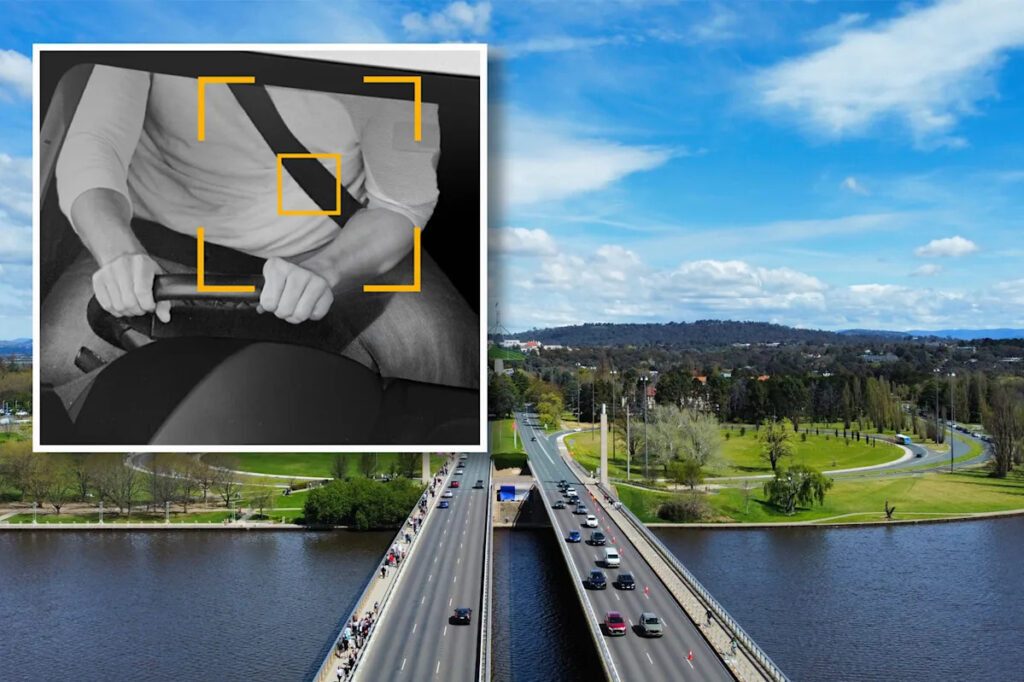
Mobile phone detection cameras in Australia’s capital are set to expand their reach in just days, targeting a wider range of road rule violations. Starting November 3, these cameras will detect seatbelt offenses involving both drivers and passengers, authorities have announced. Drivers found not wearing a seatbelt properly, or failing to ensure passengers are restrained, face fines of $574.
The announcement follows the unanimous passage of the Road Transport (Safety and Traffic Management) Amendment Bill 2025 by the Legislative Assembly last month, which enhances the detection capabilities of the territory’s cameras. This initiative is part of the ACT Government’s ongoing efforts to reduce fatalities and serious injuries on the roads.
Expanding Detection Capabilities
“Seatbelts save lives,” declared ACT Attorney-General Tara Cheyne last month. Cheyne emphasized that the measure is not only about holding dangerous drivers accountable but also about raising awareness of road safety. An ACT government spokesperson confirmed to Yahoo News that the mobile traffic detection network now comprises three portable cameras and two fixed units.
“All Mobile Traffic Detection Devices will be expanded to target drivers and passengers not wearing seatbelts or not wearing them correctly,” the spokesperson stated. This expansion is designed to operate similarly to existing systems detecting speeding, mobile phone use, and registration breaches.
Implementation Details and Exemptions
An online explanatory statement clarified that individuals with a medical exemption from wearing a seatbelt, whether correctly or at all, can submit their medical documentation directly to Access Canberra if detected by a camera while in a rideshare vehicle. This procedure bypasses the need to provide such information to the rideshare driver.
Once enforcement begins, cameras will function like those already in use for other infractions. According to Tara Cheyne, “If multiple offenses occur simultaneously, such as a mobile device and a seatbelt offense, both can be captured in one event, and the images can be used to issue multiple infringements. This capability is already available through police enforcement.”
Proper Seatbelt Use
The legislation specifies that a seatbelt is considered “properly adjusted and fastened” when the clasp is buckled, the lap belt sits low and firmly on the hips, and the sash crosses over the shoulder. An infringement review process and payment management plans will be available for those issued fines.
Technological Advancements in Road Safety
Road safety experts highlight that cameras serve as both a deterrent and an enforcement tool, targeting behaviors that are challenging for police to detect in real-time. The integration of artificial intelligence allows these cameras to scan for multiple offenses simultaneously, from seatbelt violations to speeding.
This development comes amid a broader national rollout of mobile detection cameras, which have been pioneered in Australia to address the challenges posed by new drivers and evolving road behaviors. The use of technology in this context underscores a significant shift in how road safety is managed and enforced.
As the implementation date approaches, drivers are urged to ensure compliance with the new regulations to avoid hefty fines and contribute to safer roads. The move represents a crucial step in the ACT Government’s road safety strategy, with potential implications for similar measures across the country.
For those with tips or stories, please contact: [email protected]






